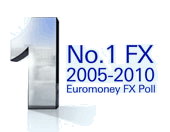
| Spring 2010 |
|
Current Trends and Practices in Trade Finance
Defining, recognizing and paying for the movement of goods and services will always be a staple of the world's economy. In today's tight credit market, transacting this business is reverting back to a classic settlement instrument — the letter of credit (L/C). This traditional banking product, which has been used by merchant traders going back to ancient times, is again becoming the instrument of choice for the payment of trade transactions. In fact, SWIFT has reported a marked increase in letter of credit volume since March 2009. To learn more about this trend, we consulted with John Baranello, Director, Trade and Risk Services, Global Transaction Banking, Deutsche Bank. Baranello frequently shares his insights and perspective on trade finance at industry conferences and workshops. Recently, he was a guest speaker on "Current Trends, Practices and Regulatory Concerns in Trade Finance" at TMANE's conference held in Boston, MA. On June 11, 2010, he served as Chair at the BAFT-IFSA workshop in New York City and participated in a panel discussion on L/Cs. Why has letter of credit activity been on the rise in recent months? Baranello: Sellers of goods are becoming increasingly concerned about the cross-border corporate risk in receiving payment from their buyers. Sellers are once again requiring the security that an L/C offers, as opposed to conducting business on an open account basis, which places the payment obligation on the buyer rather than on its bank. How does payment under an L/C work? Baranello: An L/C is a definitive undertaking from a bank for a seller to receive payment against its shipping documents. Payment under an L/C is contingent upon the quality of these documents and not the quality of the goods or services. In other words, sellers will be getting paid by a bank against their documents, which need to comply with the terms and conditions of their L/C, rather than waiting for the buyer to accept the goods or remit proceeds. Why are L/Cs such a powerful risk mitigation tool? Having the ability to receive payment against shipping documents from a bank ultimately is better than moving your goods and services and waiting for the check to arrive in the mail. For US exporters, are there any hidden US regulatory risks associated with these trade finance transactions? Baranello: Exporters must adhere to US Department of Commerce regulations in connection with individuals and entities that have been denied export privileges or parties whose presence in a transaction can trigger a license requirement under the Export Administration Regulations. In addition, exporters need to avoid transacting business with parties on the Office of Foreign Assets Control (OFAC) list of prohibited trading partners, which includes individuals, companies, organizations and countries. OFAC is a division of the US Department of Treasury. In particular, exporters need to make sure that the ocean vessels they are using are not on the OFAC list. US persons also must comply with Department of Commerce anti-boycott regulations, which require them to refuse to participate in foreign boycotts that the United States does not sanction. This requires extensive manual intervention and careful scrutiny of all documents associated with a particular transaction. What other advice would you offer to exporters that are considering the use of L/Cs in trade transactions? Baranello: If they are considering moving their business from open account back to L/Cs, they should request an irrevocable letter of credit, which cannot be cancelled without their consent. With this instrument, they will assume issuing bank/(foreign) country risk as opposed to corporate risk. Also, for additional security when they are not comfortable with the issuing bank risk, they should require a confirmed L/C, in which they would assume the local (US) risk of their relationship bank. Furthermore, we advise exporters to observe the expiry date of the L/C. Is it manageable? Can they deliver the documents to the bank on time? Exporters should have L/Cs that require only obtainable and necessary documents and they should maintain control of the issuance/creation of any document. Click here to access the recent webinar John Baranello led on "Export Trade Finance: Answers to Q1 2010 Most Frequently Asked Questions." View other articles in this edition |
|
|||||||||||||||||||||
 A Q&A with Deutsche Bank's John Baranello
A Q&A with Deutsche Bank's John Baranello Build on Best Practices to Expand Globally
Build on Best Practices to Expand Globally